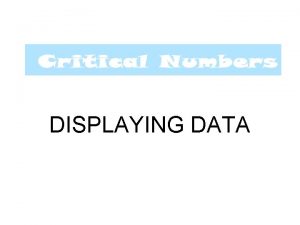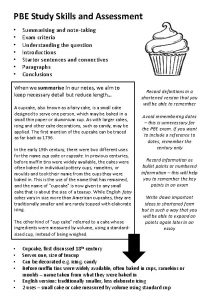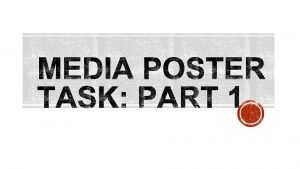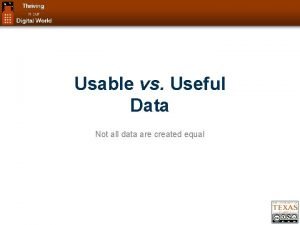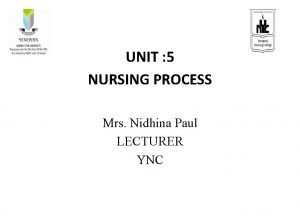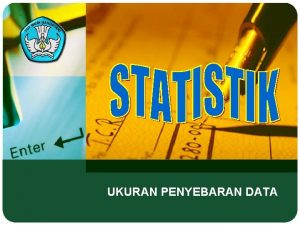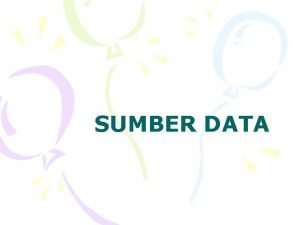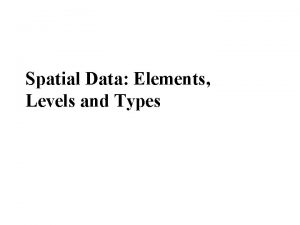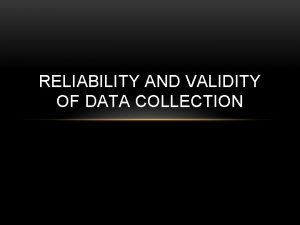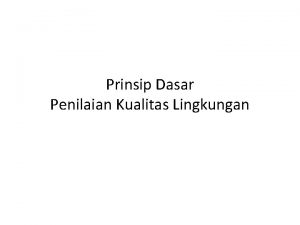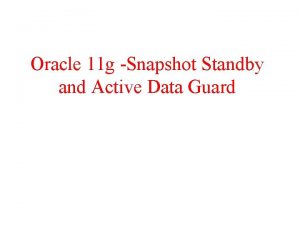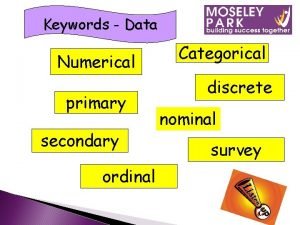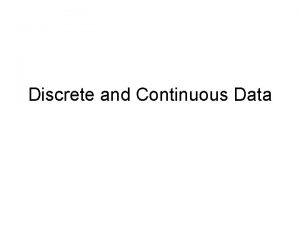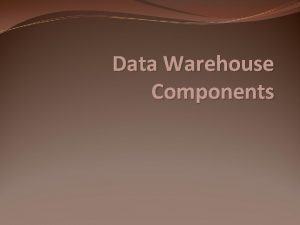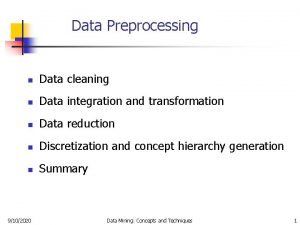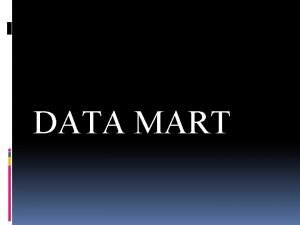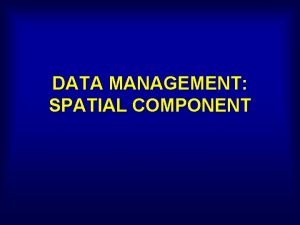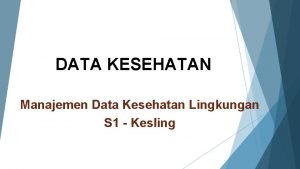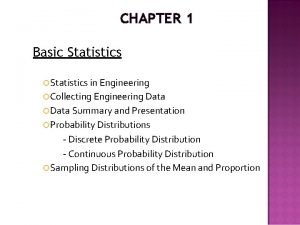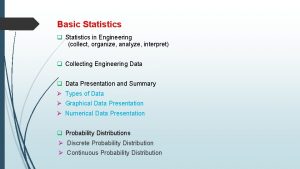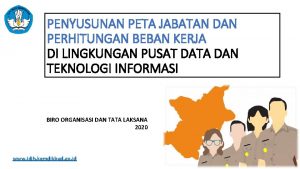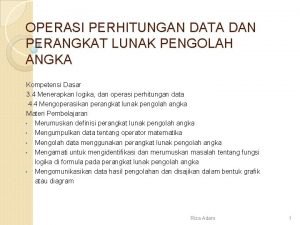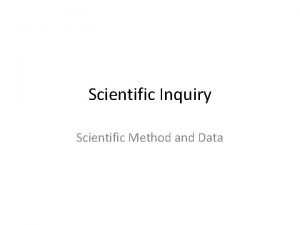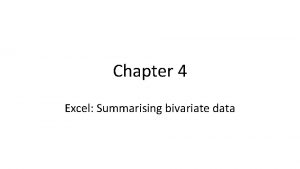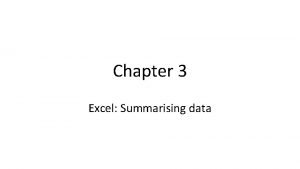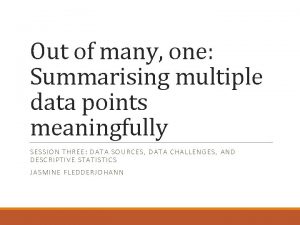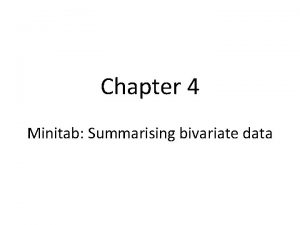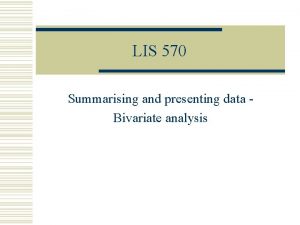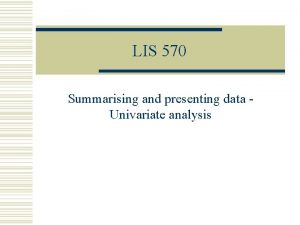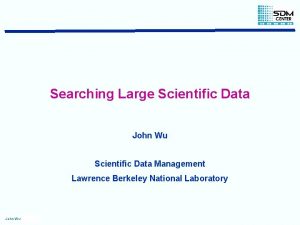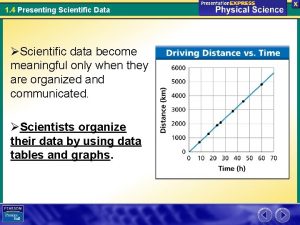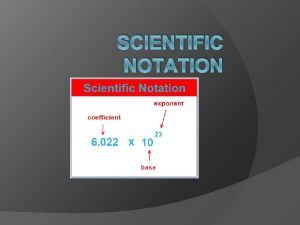Summarising Data Scientific Calculators Only 1 What are


























































- Slides: 58

Summarising Data Scientific Calculators Only 1

What are the summary statistics • Mode • Median • Mean • Range • Standard Deviation 2

A list of data 2, 3, 4, 5, 5, 8, 10 3

A list of data 2, 3, 4, 5, 5, 8, 10, 12 4

A list of data 2, 3, 4, 5, 5, 8, 8, 10 5

A list of data 2, 3, 4 , 5, 8 , 9, 10 6

Dot Plot Ungrouped frequency data 7

Stem and Leaf Diagrams 4 0 4 7 9 5 2 3 4 7 7 8 9 9 6 1 1 3 3 4 5 5 8 8 8 7 0 0 4 5 6 8 0 1 1 8

Table Ungrouped frequency data 9

Ex 2 A Statistics No Calculators 10

11

12

13

Ex 2 A Describing Distributions 14

Key Words To describe the distribution of a numerical data set we use words such as: Modality – Uni or multimodal 15

Key Words Shape – symmetrical 16

Key Words Shape – negatively skewed. 17

Key Words Shape – positively skewed. 18

Key Words Shape – Location and Spread Shape – Outliers 19

Statistical Functions Using a Class-Pad 20

A list of Data 2, 3, 4, 5, 5, 8, 10 21

A list of Data 2, 3, 4, 5, 5, 8, 10 22

A list of Data 2, 3, 4, 5, 5, 8, 10 23

A list of Data 2, 3, 4, 5, 5, 8, 10 24

A list of Data 2, 3, 4, 5, 5, 8, 10 25

A list of Data 2, 3, 4, 5, 5, 8, 10 26

Ungrouped Frequency Table 27

Ungrouped Frequency Table 28

Ungrouped Frequency Table 29

Ungrouped Frequency Table 30

Grouped Data 31

Grouped Data 32

Grouped Data 33

Grouped Data 34

Grouped Data 35

Grouped Data 36

Grouped Data 37

Ex 2 B Page 40 38

39

40

41

42

43

44

Describing distributions of scores 45

Course Objectives 2. 1. 4 with the aid of an appropriate graphical display (chosen from dot plot, stem plot, bar chart or histogram), describe the distribution of a numerical data set in terms of modality (uni or multimodal), shape (symmetric versus positively or negatively skewed), location and spread and outliers, and interpret this information in the context of the data 46

Summarising data Statistical Description: Modality – Does it have 0, 1, 2 or more modes? Mean/Median – Where is the middle of the group? Range – How much variation is there? 47

Describe This 48

Key Words - Summary Shape Desciption: Spread – the difference in data/groups Skewness – Left Skewed, Symmetrical, Right Skewed Outliers – scores that don’t seem to fit 49

Describe This 50

Key Words - Summary Context Description: Implications – what do all the previous things say about the set of data that is being analysised? 51

Describe This 52

Ex 2 C Page 45 53

Ex 2 C Page 45 54

Ex 2 C Page 45 55

Ex 2 C Page 45 56

Ex 2 C Page 45 57

Ex 2 C Page 45 58
 Insidan region jh
Insidan region jh Test your skills: summarising data
Test your skills: summarising data Http://www.finaid.org/calculators/loanpayments.phtml
Http://www.finaid.org/calculators/loanpayments.phtml Digital mechanical calculator
Digital mechanical calculator Summarising sheba
Summarising sheba Summarising sheba
Summarising sheba Summarising sentence starters
Summarising sentence starters Summarizing linking words
Summarizing linking words Summarising and paraphrasing
Summarising and paraphrasing Summarising is
Summarising is Summarize reading
Summarize reading Summarising learning intention
Summarising learning intention Difference between summarizing and paraphrasing
Difference between summarizing and paraphrasing Information gathered during an experiment
Information gathered during an experiment How is a scientific law different from a scientific theory?
How is a scientific law different from a scientific theory? Scirus for scientific information only
Scirus for scientific information only Take only photos leave only footprints
Take only photos leave only footprints In sctp, only data chunks consume
In sctp, only data chunks consume Usable data vs useful data
Usable data vs useful data Fever objective data
Fever objective data Components of gis
Components of gis Tentukan simpangan baku dari data 2 3 4 5 6
Tentukan simpangan baku dari data 2 3 4 5 6 Contoh data primer
Contoh data primer Spatial data and attribute data
Spatial data and attribute data Validity of data
Validity of data Data-data monitoring lingkungan merupakan gambaran dari
Data-data monitoring lingkungan merupakan gambaran dari Snapshot standby
Snapshot standby What are secondary keywords
What are secondary keywords Oracle coast guard
Oracle coast guard Discrete vs continuous examples
Discrete vs continuous examples Data reduction in data mining
Data reduction in data mining What is data mining and data warehousing
What is data mining and data warehousing Contoh data warehouse dan data mart
Contoh data warehouse dan data mart Components in data warehouse
Components in data warehouse Task abstraction
Task abstraction Data cleaning problems and current approaches
Data cleaning problems and current approaches Etl in data cleaning and preprocessing stands for
Etl in data cleaning and preprocessing stands for Data on the inside vs data on the outside
Data on the inside vs data on the outside What is missing data in data mining
What is missing data in data mining Concept hierarchy generation for nominal data
Concept hierarchy generation for nominal data Data reduction in data mining
Data reduction in data mining Data reduction in data mining
Data reduction in data mining Data mart
Data mart Vector data vs raster data
Vector data vs raster data Tujuan manajemen data kesehatan
Tujuan manajemen data kesehatan Procedures of data collection
Procedures of data collection Shell cube in data mining
Shell cube in data mining Data reduction in data mining
Data reduction in data mining Data preparation and basic data analysis
Data preparation and basic data analysis Qualitative and quantitative data analysis
Qualitative and quantitative data analysis Vector vs raster gis
Vector vs raster gis Statistics terms
Statistics terms Convert unstructured text to structured data
Convert unstructured text to structured data Grouped data and ungrouped data
Grouped data and ungrouped data Oflinemaps
Oflinemaps Syndicate sources
Syndicate sources Data collection secondary data sources
Data collection secondary data sources Data-data yang digunakan untuk menyusun peta jabatan adalah
Data-data yang digunakan untuk menyusun peta jabatan adalah Materi operasi perangkat lunak pengolah data
Materi operasi perangkat lunak pengolah data

